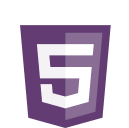You’ve probably heard that paid traffic works faster, right? So let’s talk about how to get traffic on Instagram, one of the most popular digital content platforms today.
With more than 2 billion active worldwide, it’s impossible to deny the social network’s potential for promoting products, services and brands.
Throughout this article, we’ll explore the particularities of Instagram and understand the best practices for highlighting your product or service using paid traffic.
Paid traffic: what is it?
The name is a bit self-explanatory, yes, but let’s take a step back and explain what traffic is. In the context of the web, it is used to refer to the movement of people, who browse pages, social networks, websites and many other platforms on a daily basis.
So, paid traffic is a strategy in which you pay to get a certain flow of people to a specific location. In the case of this article, Instagram.
Paid or organic traffic: which is better?
It’s not unusual for this question to ring in the ears of anyone working on the Internet. And the answer is: it depends!
While paid traffic refers to the practice of acquiring visits to a website or social media profile through paid ads, organic traffic is acquired through SEO strategies using quality content.
In the end, the combination of the two strategies, called Search Engine Marketing (SEM) or Search Marketing, can help boost results even more.
Advantages of organic traffic:
- Generating traffic does not involve direct costs.
- The traffic generated can have continuous and lasting effects.
- Creating relevant content can improve the perception of your brand.
Advantages of paid traffic:
- More short-term results
- Possibility of finding specific audiences
- High control and autonomy over budget and scope.
How to get paid traffic on Instagram
The first step to start testing ad campaigns is to have a professional profile and an account in Meta’s Business Manager.
With this tool, you’ll have access to all the posts made on your account and you’ll also be able to see the results that each publication has achieved.
After that, you need to access your ad manager (or create one) to start putting your campaigns on the web.
And you don’t need a lot of money to get started! The minimum amount is US$1.00, or around R$6.00 a day. You can then increase the amount according to your strategy.
Steps to create a paid traffic campaign on instagram
Define your objectives
In any marketing strategy, it is essential to outline your objectives and paid traffic is no different.
When thinking about a campaign, keep in mind what you want to achieve: more sales? More reach? More authority and brand awareness?
Once you understand this, you’ll be able to do your research and understand the best types of strategy to achieve the desired results.
Understand your target audience
Another fundamental aspect is to identify the target audience for which you will be running your campaign at that time.
Meta Ads allows you to target your campaign by demographic data such as age, gender, location or by interests, behavior and various other options you can explore.
This allows you to target your communication to better connect with that particular type of person, for example.
Choose the ad format
There are several types of format that can be used on Instagram and each one generates a different type of result.
That’s why it’s interesting to learn more about the platform and understand which one best suits your campaign according to the objectives and audience you’ve previously defined.
The formats most used in paid traffic campaigns on Instagram are:
- Reels;
- Stories;
- Post in the feed;
- Carousel posts;
- Video ads;
- Ads on Instagram Shopping.
Create ad content
You’ve probably noticed that there’s a sequential order here, right? So it’s important that you don’t skip any steps!
Once you’ve chosen the format, it’s time to plan, research and create the content of the ad. It should persuade your audience to take some action, be it buying a product, signing up for a newsletter, etc.
You can exploit visual and textual aspects to grab your audience’s attention. This is the time to use your creativity!
Define the budget and duration of the campaign
It’s time to put your hand in your pocket and even that needs to be done strategically, okay?
It is essential that you define how long your campaign will last and how much you will be able to spend in order to achieve the expected results.
Remember that you can leave a campaign running without a specific end date, but then you have to keep investing so that your campaign isn’t paused.
Analyze the results
It’s time to see if, once everything is ready and the campaign is on the air, things are going according to plan.
Meta Ads offers several ways to do this, offering metrics such as reach, click-through rate, conversion rate, sales, etc. If you prefer, you can also use your own data dashboard, customized to your niche and your needs.
This stage is essential for knowing what is working, what is not going so well and how to correct and optimize the campaign.
How to measure the results of paid traffic
Analyzing the results is fundamental and allows you to understand whether the return is greater than the investment, but how do you do this in practice?
There are some essential metrics for you to understand what is happening, what needs to be changed or optimized. Check them out:
- CPC (Cost per Click): The CPC represents the amount you pay for each click on your ad. It is calculated by dividing the total value of the ad by the number of clicks received:
CPC = ad value / number of clicks
- CTR (Click-Through Rate): This metric indicates the percentage of people who click on your ad in relation to the total number of views. It’s a way of measuring the effectiveness of your ad:
CTR= (number of clicks/number of views) x 100%
- Conversions: Indicates the number of people who took the desired action after clicking on your ad. This could be a purchase, filling in a form or any other specific goal.
- CPA (Cost per Acquisition): Similar to CPL (Cost per Lead), CPA focuses on sales. It shows how many visitors make a purchase and the average value of each sale made through your ads:
CPA= ad value/ number of conversions
- ROI (Return on Investment): This metric assesses whether the money invested is bringing results that outweigh the costs of the campaign. It is calculated as follows:
ROI= [(revenue generated – campaign cost)/campaign cost] ×100%
Conclusion
In short, paid traffic is a marketing tool that can be used in a versatile way. We’ve seen that it can be combined with organic traffic to achieve great results.
With a well-planned strategy and the correct use of analysis tools, it is possible to obtain significant results that complement other communication strategies.
Remember to keep a balance between the methods, monitor the results closely and always be willing to adjust your strategies to make the most of the opportunities offered by paid traffic on Instagram. See you in the next article! 😉





